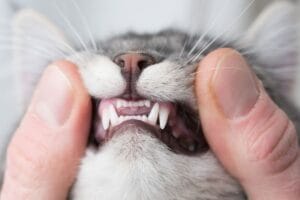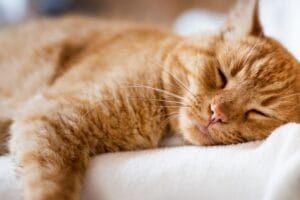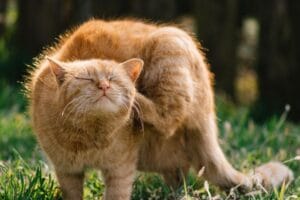6 Things To Know If Your Cat Eats Rice

As cat owners, we want to ensure our pets have a balanced diet. One common question that arises is whether cats can eat rice. Understanding the impact of rice in a cat’s diet is crucial for their overall well-being. In this blog post, we will explore six key points to know if your cat eats rice.
We’ll discuss the safety and nutritional value of rice for cats, its potential benefits, possible risks, how to incorporate it into their diet, alternative carbohydrate sources, and the importance of consulting a veterinarian. By understanding these key points, you can make informed decisions about including rice in your cat’s meals.
Let’s dive into the details of how rice can fit into your cat’s diet and what you should be aware of when feeding it to them.
Can Cats Eat Rice?
When it comes to the question of whether cats can eat rice, the answer is generally yes, but with some important considerations. Cats are obligate carnivores, meaning their bodies are designed to thrive on a meat-based diet. However, small amounts of rice can be included in their meals as a carbohydrate source.
Rice itself is a relatively mild and easily digestible grain, which makes it a popular choice for many pet owners looking to diversify their cat’s diet or provide a source of energy. It can serve as an alternative to grains that may cause allergies or digestive issues in some cats. However, it’s important to note that rice should not become a significant part of a cat’s diet, as their nutritional needs rely on protein.
When it comes to the nutritional value of rice for cats, it offers some benefits. Rice contains carbohydrates that can provide energy and support digestive health. It is also low in fat and cholesterol, which can be beneficial for cats with certain health conditions or weight management concerns. However, regardless of this cats require a high-protein diet, so the majority of their nutrition should come from quality animal-based sources.
To ensure a balanced diet for your pet cat, it’s recommended to consult with your veterinarian before introducing rice into their meals. They can provide personalized advice based on your cat’s specific needs and dietary requirements. Additionally, they can guide you on the appropriate portion sizes and frequency of rice consumption to avoid any potential digestive issues or imbalances in their diet.
In the following sections, we will further explore the benefits, risks, and proper ways to incorporate rice into your cat’s diet, as well as discuss alternative carbohydrate sources to consider. By understanding the role of rice in your cat’s nutrition, you can make informed choices and promote their overall well-being.
Benefits of Rice for Cats
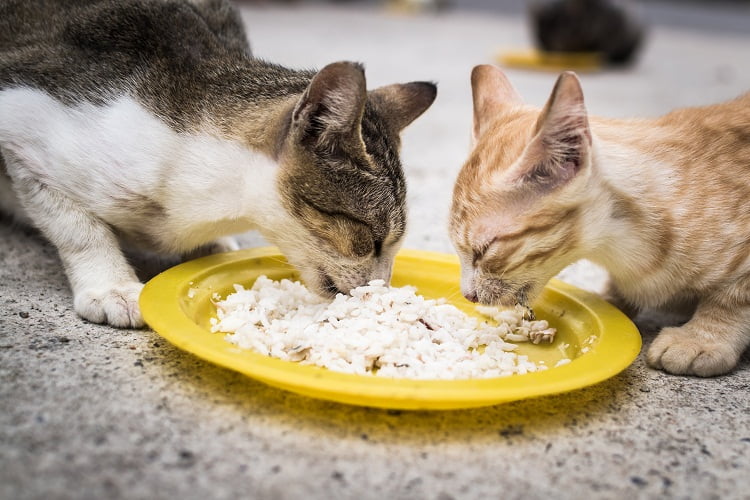
When it comes to the benefits of rice for cats, there are several factors to consider. While cats are primarily carnivorous animals, meaning their diet should primarily consist of meat, there are certain scenarios where rice can provide some advantages.
One of the main benefits of rice is that it is easily digestible for cats. This can be especially important for cats with digestive sensitivities or those recovering from an illness or gastrointestinal upset. Rice is gentle on the stomach and can provide a source of easily accessible energy without putting additional strain on the digestive system.
Rice also serves as a good source of carbohydrates for cats. While cats have a limited ability to digest and utilize carbohydrates compared to other animals, small amounts of carbohydrates in their diet can still contribute to their energy needs. Rice can provide a quick source of energy for active cats or those with higher energy requirements.
Another potential benefit of rice is its hypoallergenic nature. Some cats may develop allergies or sensitivities to certain grains, but rice is generally considered to be a low-allergen food. This makes it a suitable option for cats with grain sensitivities or allergies, allowing them to still have a source of carbohydrates without triggering adverse reactions.
It’s important to note that the benefits of rice for cats should be approached with caution and in moderation. While it can be a useful addition in certain situations, it should not replace the essential animal protein that cats require. The majority of their nutrition should come from high-quality meat-based sources.
Risks of Rice for Cats
When it comes to feeding rice to cats, there are potential risks and drawbacks that cat owners should be aware of. While rice is generally considered safe for cats in small quantities, it’s essential to understand these risks to make informed decisions about your cat’s diet.
One of the main risks of feeding rice to cats is the potential for digestive issues. Cats have a limited ability to digest carbohydrates, including rice, as their bodies are designed to metabolize animal protein. Introducing too much rice into their diet can lead to digestive upset, including diarrhea or constipation. It’s crucial to monitor your cat’s response to rice and adjust the portion size accordingly.
Additionally, some cats may have allergies or sensitivities to grains, including rice. These allergies can manifest as skin irritations, itching, or gastrointestinal problems. If you notice any signs of an allergic reaction after introducing rice, it’s important to discontinue its use and consult with your veterinarian for alternative options.
Another risk is the potential imbalance in the overall nutritional profile of your cat’s diet. Rice is primarily a source of carbohydrates and lacks essential nutrients that cats need to thrive, such as taurine and certain vitamins. Feeding too much rice without ensuring a balanced diet that includes sufficient animal-based protein can lead to nutrient deficiencies over time.
To mitigate these risks, it’s important to feed rice to cats in moderation and as part of a well-balanced diet. If you decide to include rice, it should make up only a small portion of their overall meals. It’s also crucial to choose high-quality rice and cook it thoroughly to ensure it’s easily digestible for your cat.
As always, consulting with your veterinarian is recommended before introducing rice or any dietary changes to your cat’s routine. They can provide guidance based on your cat’s individual needs and help you make the best choices to promote their health and well-being.
How to Feed Rice to Cats
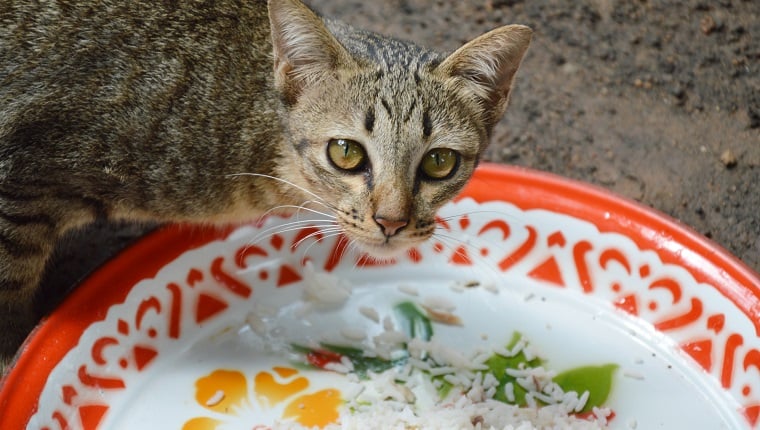
Feeding rice to cats requires careful consideration and proper implementation to ensure it is done safely and effectively. Here are some guidelines to follow when incorporating rice into your cat’s diet:
- Portion Sizes: Rice should only make up a small portion of your cat’s overall diet. It is primarily a carbohydrate source, and cats require a diet rich in animal-based protein. Aim to provide no more than 10% of their daily caloric intake from rice.
- Cooked and Plain: When preparing rice for your cat, make sure it is thoroughly cooked. Raw or undercooked rice can be difficult for cats to digest. Avoid adding any seasonings, spices, or sauces to the rice, as they can be harmful to cats.
- Mix with Protein: To ensure a balanced meal, mix the cooked rice with a high-quality source of animal protein, such as cooked chicken or fish. This combination provides a good balance of carbohydrates and protein for your cat’s nutritional needs.
- Gradual Introduction: If you are introducing rice to your cat’s diet for the first time, do it gradually. Start with a small amount mixed with their regular food and monitor their response. Gradually increase the amount over time, while observing any changes in their digestion or overall well-being.
- Observation and Adjustment: Pay close attention to how your cat responds to the addition of rice in their diet. Monitor their stool consistency, energy levels, and overall health. If you notice any adverse reactions, such as digestive upset or allergies, discontinue feeding rice and consult with your veterinarian.
Remember, every cat is unique, and what works for one may not work for another. It’s important to consider your cat’s individual dietary needs, health conditions, and consult with your veterinarian before making any significant changes to their diet.
By following these guidelines, you can safely incorporate rice into your cat’s meals, ensuring they receive a balanced and nutritious diet.
Alternatives to Rice for Cats
While rice can be included in a cat’s diet in moderation, some cat owners may prefer to explore alternative carbohydrate sources. Here are some alternatives to rice that are more suitable for cats:
- Sweet Potatoes: Sweet potatoes are a nutritious and easily digestible carbohydrate option for cats. They are rich in vitamins, minerals, and fiber. Cooked sweet potatoes can be mashed or diced and added to your cat’s meals.
- Pumpkin: Pumpkin is another excellent alternative to rice. It is low in calories and high in fiber, aiding in digestion. Make sure to use plain, canned pumpkin without any additives or spices. Small amounts can be mixed with your cat’s food.
- Green Peas: Green peas are a good source of carbohydrates and fiber for cats. They are easily digestible and can be cooked or steamed before serving. Mash or puree the peas and mix them with your cat’s regular meals.
- Lentils: Cooked lentils can be a nutritious addition to your cat’s diet. They are high in protein and fiber and provide a good alternative to rice. Make sure to cook the lentils thoroughly and mash or puree them before feeding.
- Cat-Friendly Commercial Diets: There are commercially available cat foods that offer grain-free options. These diets are specifically formulated to meet the nutritional needs of cats without the inclusion of grains like rice. Look for high-quality brands that prioritize animal-based protein sources.
When introducing any alternative carbohydrate source to your cat’s diet, it’s important to do so gradually and monitor their response. Observe any changes in their digestion, energy levels, and overall well-being. If you have any concerns or questions, consult with your veterinarian for guidance on the best alternatives for your cat.
Consulting a Veterinarian
Consulting a veterinarian is crucial before making any significant dietary changes for your cat. A veterinarian can provide personalized recommendations and address concerns regarding rice or alternative dietary options. They will assess your cat’s specific needs, taking into account age, weight, health, and dietary restrictions.
Veterinarians possess expertise in feline nutrition and can guide you in choosing the right carbohydrate sources. They will help create a well-balanced diet plan for your cat’s optimal health and well-being. Remember, your veterinarian is your best resource for making informed decisions about your cat’s diet.
Conclusion
In conclusion, being aware of the implications of feeding rice to your cat is essential for their overall health and well-being. By understanding the six key points discussed in this article, you can make informed decisions about incorporating rice into their diet or exploring alternative options.
It is important to prioritize your cat’s nutritional needs and seek professional guidance when necessary. Consulting with a veterinarian will ensure that your cat’s diet is well-balanced and suited to their individual requirements.
Remember, every cat is unique, and what works for one may not work for another. By staying informed and seeking professional advice, you can provide your feline companion with a healthy and appropriate diet that supports their overall health and longevity.
